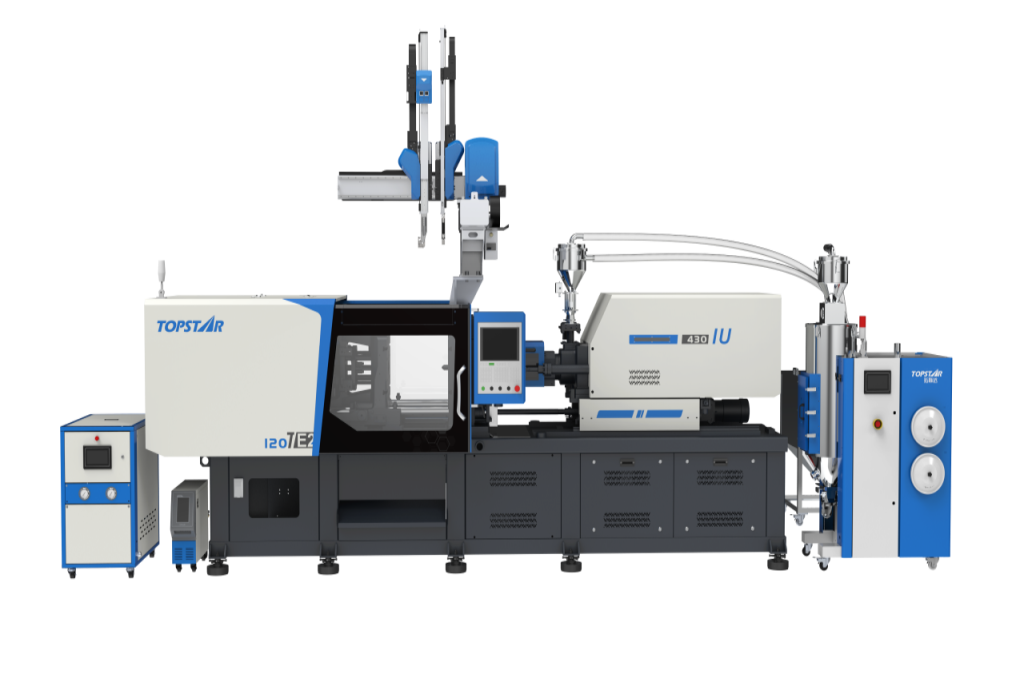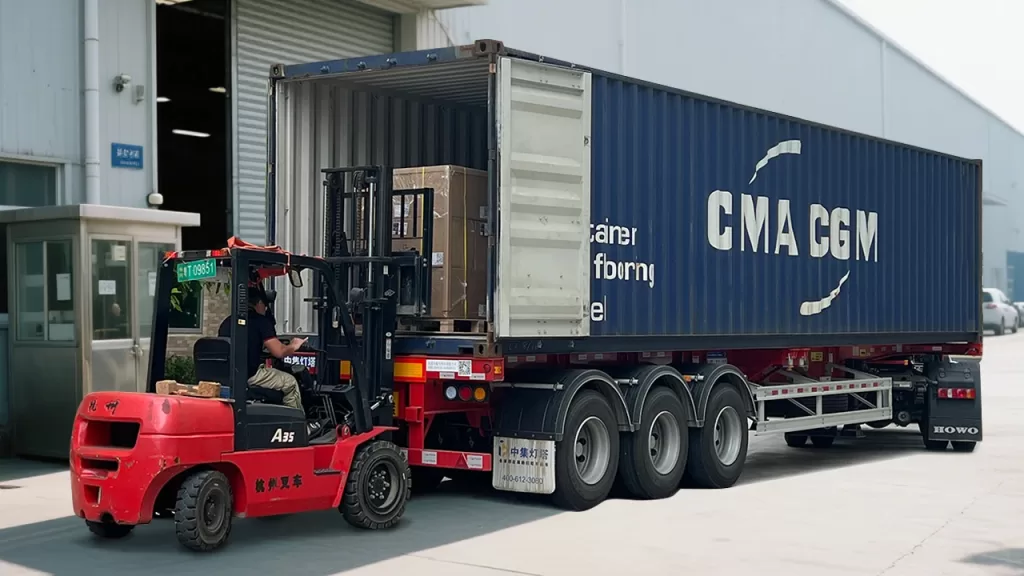What relevant cost details should the injection molding machine manufacturer inform in advance?
2025/08/25 By le zhan

Before making a purchase decision, buyers need transparent, detailed, and contextualized cost information, and receiving a quote is only the most fundamental part. During pre-purchase discussions with customers, we meticulously analyze the costs involved. The customer’s team expects a clear understanding of equipment pricing, shipping, installation, commissioning, consumables, spare parts, warranty coverage, maintenance, energy consumption, and other relevant details. To this end, Topstar, a global injection molding machine manufacturer, should not only provide a baseline quote but also provide costing based on different scenarios to reflect actual operating conditions.
Injection molding machine manufacturer should also disclose the upfront purchase price and configuration costs
The most obvious cost that injection molding machine manufacturers need to be clear about is the upfront purchase price. Transparency requires more than a simple number. The basic cost of the injection molding machine or other injection molding equipment should be listed, along with optional configurations, including fixture and tie rod options, screw type, barrel material, injection unit sizes, control systems, and any factory customization required for special molds or parts. Injection molding machine manufacturers should itemize each optional feature and clearly explain its benefits, allowing buyers to weigh the added value against the additional costs.
Additionally, it’s important to explain model differences that impact pricing. Differences such as hydraulic versus all-electric drive, tie-rod versus tie-rodless machine frames, and integrated versus standalone temperature control systems can significantly impact both initial and lifecycle costs. For example, all electric injection molding machines typically have a higher purchase price but lower operating costs. Conversely, for specific high-tonnage applications, a hydraulic or hybrid injection molding machine may offer a lower entry cost.

Shipping, Import, and Site Preparation Costs
In addition to the price of the injection molding machine, shipping and logistics costs are often crucial for buyers to understand. As an injection molding machine manufacturer, we provide estimates for shipping costs, packaging details, and logistics responsibilities based on commercial terms (such as EXW, FOB, CIF, or DDP). This includes typical shipping weights and volumes, as well as any special handling requirements that may apply. It’s also essential for manufacturers to clearly identify the individuals responsible for coordinating customs clearance, import duties, taxes, and local shipping compliance. This reduces hidden import fees and misallocated logistics.
Site preparation costs are another often underestimated factor. Injection molding machine manufacturers offering complete plant planning should clearly specify the machine’s physical footprint, foundation requirements, floor load limits, power requirements, compressed air needs, water cooling requirements, and plant ventilation requirements in their quotes. Furthermore, they must estimate the cost of power distribution upgrades. Providing these site preparation details upfront helps buyers budget for the complete plant plan.

Injection molding machine manufacturer should also provide maintenance, spare parts, and warranty economics.
Long-term reliability depends on a realistic maintenance plan and the availability of spare parts. Therefore, injection molding machine manufacturers should provide expected maintenance costs over a specified period, including recommended maintenance intervals, standard wear parts maintenance, and typical part replacement costs.
Warranty terms can significantly impact the total cost of ownership. A qualified injection molding machine manufacturer must also disclose the warranty period, coverage (including parts, labor, and travel), exclusions, and any procedures required to maintain warranty coverage. Furthermore, suppliers should clearly explain the costs and benefits of extended warranties or service contracts beyond the basic warranty, including any preventive maintenance features, response time, service level agreements, and whether predictive maintenance or remote monitoring services are included. Therefore, transparent warranty and spare parts policies are crucial for accurate budgeting and ensuring production continuity.
Energy Consumption, Utilities, and Operating Costs
Operating costs, particularly energy consumption, are among the most significant recurring expenses for injection molding operations. Injection molding machine manufacturers should provide energy consumption data under actual operating conditions, including kilowatt-hours per cycle, kilowatt-hours per kilogram of molded plastic, and data comparing standby mode to full production mode. Where applicable, comparative metrics between different machine models should be provided to highlight potential lifecycle energy savings. This data can help buyers estimate monthly and annual energy expenses and calculate return on investment based on local electricity prices.
Of course, manufacturers also need to clearly define utility requirements that impact operating costs, such as compressed air consumption, chiller capacity for mold cooling, and any specific water usage profiles if they use a water cooling system. They should also disclose the typical auxiliary power consumption of peripheral equipment, such as dryers, injection molding robots, and mold temperature controllers. This ultimately translates into measurable cost savings.
Provide detailed cost breakdown communication
A professional injection molding machine manufacturer must disclose a comprehensive and detailed cost breakdown upfront, including procurement and configuration costs, shipping and site preparation expenses, installation, commissioning, maintenance, spare parts, and warranty economics. Additionally, manufacturers should detail operating costs, encompassing energy and utilities, as well as obsolescence considerations. When suppliers provide a precise cost breakdown and explain the functional trade-offs associated with each cost item, buyers can make informed choices that meet their production goals.
Common Questions When Purchasing Injection Molding Machines
Q1. What other costs should I expect besides the machine quote?
A1: Other expenses should be expected, including shipping, customs duties/import taxes, site preparation, installation and commissioning labor, and possible peripheral equipment charges.
Q2. How do warranty and service contracts affect the total cost of ownership?
A1: Warranties reduce risk by covering defects, but coverage varies. Extended service contracts often include preventative maintenance and faster response times, which can reduce unplanned downtime and long-term repair costs.
Q3. To reduce operating costs, should I opt for an all-electric or hydraulic injection molding machine?
A1: All-electric injection molding machines generally use less energy and have lower maintenance costs, so operating costs may be lower in the long run. However, for specific high-tonnage or high-injection-speed applications, a hydraulic or hybrid injection molding machine may be more cost-effective.
TRENDING POSTS
- TOPSTAR Global Open Day 2025: Humanoid Robot Debuts, Pioneering a New Decade of Intelligent Manufacturing 2025/08/25
- Topstar Showcases TE II Electric Injection Molding Machines at InterPlas Thailand 2025 2025/08/25
- Topstar Expands Its Ecosystem Partnerships to Drive Smart Manufacturing Innovation 2025/08/25
- What factors can cause delays in the injection molding process of plastic molding machine? 2025/08/25
HOT TOPIC
- .ervo motor-driven linear robots
- •
- 1.0 guangdong topstar technology co. ltd
- 1.0 topstar china
- 1.0 topstar robot
- 11
- 160℃ mold temperature controller
- 170 ton injection molding machine
- 2
- 21
- 220-ton injection molding machine
- 23
- 3 axis robot
- 3 axis robots
- 3 in 1 Compact Dehumidifying Dryer
- 3-axis robot
- 3-axis robots
- 39
- 41
- 460T injection molding machine
- 5-axis CNC machine
- 62
- 90 ton injection molding machine
- accuracy
- Air Chillers
- all electric injection molding machine
- all electric injection molding machines
- all-electric injection molding machine
- All-electric injection molding machines
- and overall production quality. Therefore
- AP-RubberPlas
- automated injection molding machine
- Automation changed engineering
- automation of injection molding robots
- automotive parts injection molding
- auxiliary machine
- Bench Injection Molding Machine
- Cabinet dryer manufacturers
- Cabinet dryers
- chiller
- CNC Drilling Machine
- CNC Drilling Machines
- cnc engraving machine manufacturer
- cnc laser cutting machine manufacturer
- CNC machine
- CNC Machine Center
- CNC Machine for Sale
- CNC Machine Manufacturing
- CNC Machine Tool
- CNC machine tool product
- CNC Machining Center
- CNC wood carving machine
- Cooling system
- Cross-Walking Single Axis Servo Cylinder Robot
- Cross-Walking Single-Axis Servo Cylinder Robot
- Cross-Walking Three-Axis/Five-Axis Servo Driven Robot
- cross-walking three-axis/five-axis servo-driven robot
- Dehumidifier Dryer
- Dehumidifying Dryer
- delta parallel robot
- Desktop Injection Molding Machine
- Desktop injection molding machines
- Desktop Molding Machine
- desktop plastic injection machine
- Desktop Plastic Injection Molding Machine
- Digital Transformation
- direct clamp injection molding machine
- Direct clamp injection molding machines
- Dosing & mixing system
- Drilling Centers
- Drying and dehumidification system
- drying and dehumidifying equipment
- Drying and Dehumidifying System
- drying system
- effective and efficient. Cabinet dryers are also used in other industries where large quantities of material need to be dried
- efficient injection molding machine
- elbow hydraulic injection molding machines
- electric injection molding machine
- electric injection molding machines
- energy-efficient injection molding robot
- energy-efficient water chiller
- energy-efficient water chillers
- energy-saving injection molding machine
- etc. Among injection molding robots
- exhibition
- features of CNC machine
- Feeding And Conveying System
- Five Axis Machine Center
- Flexible Production Line
- Fully automatic injection molding machine
- Gathering Topstar
- giant injection molding machine
- GMU-600 5-Axis Machining Center
- Granulating & Recycling System
- Heavy duty injection molding machine
- High-precision electric molding machines
- high-precision plastic molding machines
- high-speed all electric injection molding machine
- high-speed electric injection molding machine
- High-Speed Packaging Injection Molding
- Honeycomb rotor dehumidifier
- horizontal injection molding machine
- Horizontal Injection Molding Machines
- Horizontal Injection Moulding Machine
- Horizontal Mixer manufacturer
- How The CNC Machine Works
- hybrid injection molding machine
- hydraulic injection molding machine
- Hydraulic Injection Molding Machines
- in this article
- Industrial AI
- Industrial Automation
- Industrial robot
- Industrial Robot Chinese brand
- industrial robot parts
- industrial robot supplier
- Industrial robots
- Industry Chain
- Injection Manipulator
- injection manipulator robot
- injection mold machines
- Injection molding
- Injection molding automation
- Injection Molding Automation Solution
- injection molding dryer
- Injection molding equipment
- injection molding hopper dryer
- Injection molding machine
- injection molding machine brand
- Injection Molding Machine Factory
- Injection Molding Machine Manufacture
- Injection molding machine manufacturer
- injection molding machine manufacturers
- Injection molding machine procurement
- injection molding machine robotic arm
- injection molding machine with a robot
- Injection molding machines
- injection molding material dehumidifying
- injection molding plant
- injection molding process
- Injection Molding Robot
- injection molding robot arm
- Injection molding robot automation
- Injection molding robotic arm
- injection molding robots
- Injection moulding machine
- injection moulding machines
- Injection Moulding Robots
- Injection Robot
- Injection robot arm
- Injection robot manufacturer
- Injection robot wholesale
- injection robots
- Intelligent Factory
- intelligent injection molding machines
- Intelligent Manufacturing
- intelligent mold temperature
- intelligent mold temperature controller
- Intelligent mould temperature controller
- InterPlas Thailand 2025
- Introducing Injection Robot
- It is the best choice for drying large quantities of material at once. Cabinetmakers use these machines because they are fast
- Large flow water type mold temperature controller
- large injection molding machine
- large injection molding machines
- Learn what industrial automation and robotics is
- linear robot
- linear robots
- low speed sound-proof granulator
- machine plastic molding
- make sure to add some! Improvements (2) Keyphrase in introduction: Your keyphrase or its synonyms appear in the first paragraph of the copy
- manipulator machine
- manufacturing
- Manufacturing Innovation
- medical grade injection molding machines
- Medical Injection Molding
- medical injection molding machine
- medical injection molding machines
- micro injection molding machine
- middle speed granulator
- Mini CNC machine manufacturers.
- mobile cover making machine
- Mold Temperature Control System
- mold temperature controller
- mold temperature controllers
- molding machine
- molding material Dehumidifying System
- mould temperature control system
- mould temperature controller
- mould temperature controllers
- New electric injection molding machine
- nitrogen dryer manufacturer
- nitrogen dryer system manufacturer
- Oil type mold temperature controller
- Oil type mold temperature controllers
- open day
- optical component injection molding
- Outbound links: No outbound links appear in this page. Add some! Images: No images appear on this page. Add some! Internal links: No internal links appear in this page
- packaging injection molding
- Packaging Solutions
- PET Preform injection molding
- phone case maker machine
- phone case making machine
- phone cover making machine
- plastic bottle making machine
- plastic bottle manufacturing
- plastic bucket making machine
- plastic bucket manufacturing
- Plastic chair making machine
- plastic forming equipment
- plastic hopper dryer
- plastic injection machine
- plastic injection machines
- plastic injection molding
- Plastic injection molding equipment
- Plastic injection molding machine
- Plastic Injection Molding Machines
- plastic injection moulding machine
- plastic injection moulding machines
- plastic injection robot
- plastic molding
- Plastic Molding Industry
- Plastic Molding machine
- plastic molding machine 1
- Plastic Molding Machines
- plastic molding press
- plastic moulding machine
- plastic phone case making machine
- plastic-molding machine
- powerful granulator
- Powerful Type Sound-Proof Granulator
- precision injection molding
- precision injection molding machines
- production of plastic seats
- pure water mould temperature controller
- Robot injection molding
- robot injection molding machine
- robot manufacturing companies
- Robotic arm for injection molding machine
- robotic injection molding machines
- robotics in injection molding
- SCARA robot
- SCARA robots
- Service-oriented manufacturing
- Servo Cylinder Robot
- servo driven robot
- Servo Driven Robots
- servo injection molding machine
- servo injection robots
- servo motor-driven linear robots
- servo-driven 3-axis robot
- Servo-Driven Robot
- Setup of injection machine
- Silicone Injection Molding Machine
- six-axis industrial robot
- Smart Manufacturing
- Stainless Hopper Dryer
- Stainless Hopper Dryers
- star club
- swing arm robot
- take-out robot
- take-out robots
- Thailand 4.0
- the choice between servo-driven robots and hydraulic robots will have a certain impact on efficiency
- the most popular injection molding machine
- the type of injection molding robot
- TIC2000 Control System
- TMII injection molding machine
- toggle clamp injection molding machine
- Toggle Hydraulic Injection Molding Machines
- toggle injection molding machine
- Top 10 brands of injection robots
- Topstar
- Topstar Electric Injection Molding Machine InterPlas Thailand 2025 Smart Manufacturing Thailand 4.0
- Topstar Engineering
- Topstar Industrial Robots
- Topstar injection molding intelligent
- Topstar Scara Robots
- Useful Injection molding machine
- Vertical machining centers
- volumetric type blender
- water chiller
- water chillers
- water distributor
- water type mold temperature controller
- Water Type MoldTemperature Controller
- Water-Type Mould Temperature Controllers
- We often face choices when performing injection molding. We will choose the type of injection molding machine
- wholesale of injection molding machines
- x carve CNC
- 热门查询 点击次数 展示 排名 topstar
